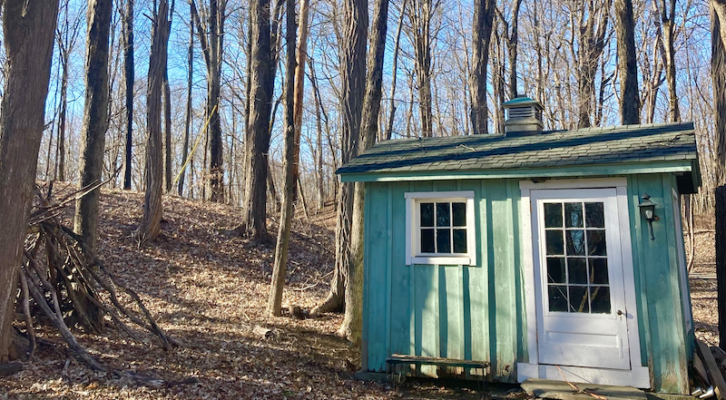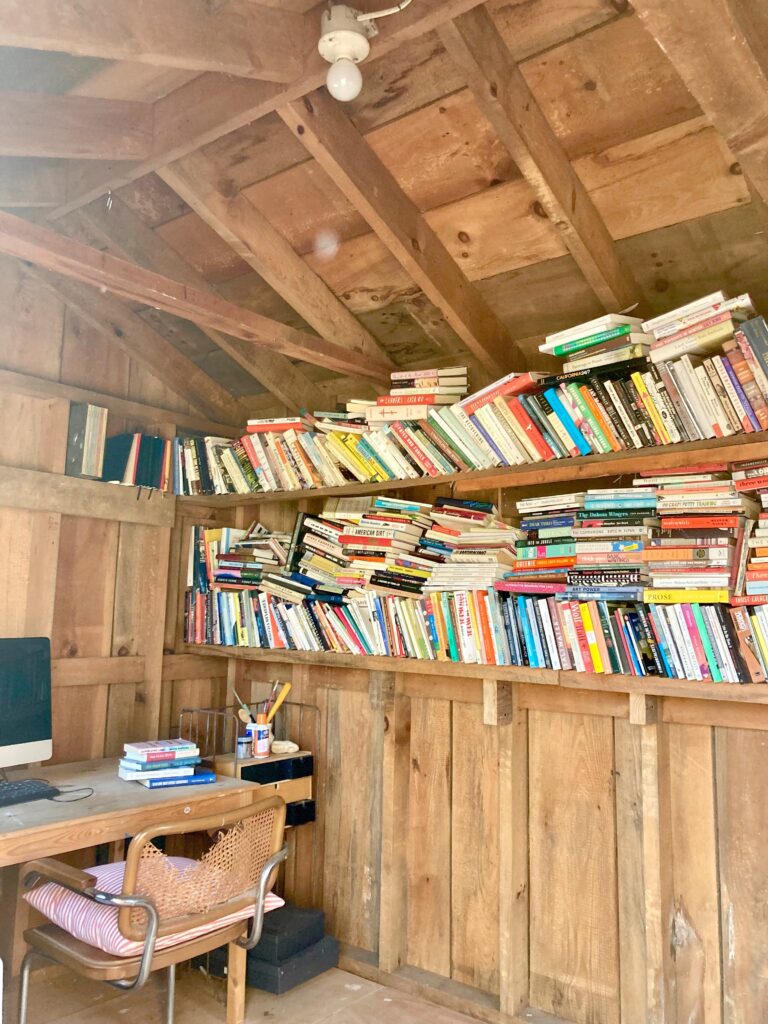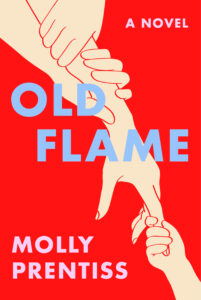
A Shed of One’s Own (in Upstate New York)
Molly Prentiss on Trading Chaos for Quiet in Hopes of Writing
Images courtesy of the author.
In 2018, when Brooklyn’s doors began to slowly close on us after over a decade, my husband and I started to consider moving upstate. We made a number of day trips to see if we could envision ourselves there, surrounded by trees and farm stands, saddled with renovation projects on some 1800s farmhouse.
It seemed fun, in a certain homesteady way, but so far from our current lifestyle, so many miles an hour slower than our current speed, that it never totally made sense to me. I was used to hustling and running out to the bodega. I was used to being surrounded and held by the characters and stories of the city.
Still, it felt like we didn’t have much choice; both my husband and I needed time and space to make our work—he is a potter and I am a writer—and the city was no longer affording us that. The buildings where we kept our studios (his was in an old bluestone factory, mine was in an old bread factory) went up for sale. The house we were renting went up for sale. It became clear to us that we were headed north.
So we Zillowed our brains out until our eyes bulged, ogling dilapidated barns in Germantown and old storefronts in Hudson and quaint Victorians in Kingston. Nothing clicked until we visited the schoolhouse—a one-room cutie in Red Hook, New York, built in 1841, converted into a living space sometime in the 1970s, still outfitted with an original chalkboard and massive wide plank floors, a stone fireplace that swerved wonkily up toward the steep pitch of the ceiling.
It did the thing people say houses do: it spoke to me. I imagined our teeny daughter drawing on the ancient chalk board. I imagined plastering the fireplace to look like a Santa Fe daydream. I imagined myself writing in the garden shed, which was perched like a little miracle on the edge of the property.
Yes, there was a garden shed. And yes, this shed, like the workshop space under the house that my husband would use for his studio, was a major selling point. The shed was painted a light green color that reminded me of Oregon in springtime and antique tea sets. The paint had flaked to reach peak patina; the inside was filled with cobwebs and old rakes; it was uninsulated and drafty; one lightbulb hung in the center and poorly lit the whole space.
But I could see it; I could feel it. There were planks of wood nailed along the walls that would hold my books. There was a square of afternoon light that fell across the floor. It smelled like cedar, which smelled like home.
The day we officially bought the schoolhouse, New York City went into lockdown. We signed the paperwork wearing gloves and N-95s. We hadn’t planned on moving during a pandemic, but in this moment in history, all plans had become entirely irrelevant. We strapped a mattress to the top of our old Volvo (this was unsuccessful; it was as if the car were boiling hot and was trying desperately to wriggle out of the cumbersome coat that was the mattress; we had to abandon it somewhere in the Bronx) and made our upstate pilgrimage. A shedding: of our city life, our city things, our city selves.
When we’d decided to purchase a one-room house, we hadn’t considered that we’d be stuck inside of it, without access to the outside world or other humans, for entire seasons, with our then 2-year-old daughter. We hadn’t known the specific kind of claustrophobia that came out of such insularity, about the physical craving we’d feel for space. My garden shed was the only space that was entirely mine, and it became my sanctuary. There was much to grieve—so much had been shed—but in that little room I found shards of sanity among the shards of light.

The shed had everything I needed in a writing space: a desk, my books, and quiet. Oh, the quiet. It was a quiet I did not know I needed, did not understand I’d been craving. In the city, I had grown used to working surrounded by sound; I gravitated toward busy cafes or communal studios; I liked feeling like I was part of the living, chattering world, even if I was somewhere else in my mind.
When it was my husband’s turn to take over the childcare, I would rush toward my tiny cedar box to write.
But I did know that my most focused writing and thinking happened when I left the fast-paced city behind and went away—to writing residencies in the Adirondacks or Vermont, or self-imposed retreats in Rhode Island or Santa Cruz. From within the quiet of these escapes came a certain clarity. I found some version of it in the shed.
The pandemic had put a stop to my freelance copywriting work, so those first months in the shed were all mine. It was springtime, then summer, and the space was warm enough to be in without a heater; it stayed shaded and cool when it was baking outside. When it was my husband’s turn to take over the childcare, I would rush toward my tiny cedar box to write. I wrote the first draft of my new novel in there. I became acquainted and then friendly with the large groundhog who had taken up residence underneath.
When fall hit and the weather cooled, I donned wool sweaters. When winter came, I lugged space heaters in and cranked them up as high as they could go. I was determined to keep the shed alive, but alas—when it started to snow, it became decidedly impossible. I migrated to the big farm table we’d brought into the schoolhouse, fitting in spurts of writing between doling out snacks and Band-Aids to my toddler.
Once pandemic restrictions lifted, I started working at libraries and cafes again. In many ways, this was more comfortable and familiar, writing amidst the bustle of the rest of life. In fact, I didn’t return to the shed, except to retrieve a book when I needed it, after that. After over a year of so much quiet, I did not think I missed it.
But I miss it now, all these seasons later. I’ve finally put plans in motion to insulate the walls. (I’ve been avoiding this for so long because it will mean losing the makeshift cedar bookshelves, the woody, homey smell.) After living upstate for a few years, our life has become full and loud, packed with obligations and events and to-dos. My freelance work has picked up again, leaving little to no time for dedicated writing. It’s time to reinhabit that shitty yet sacred little space, to reclaim it as my own. I can see it. I can feel it. The sunshine creeping in through that old window. The words I’ve been saving up making their way onto the quiet page.
_______________________

Molly Prentiss’ Old Flame is available now from Gallery/Scout Press.
Molly Prentiss
Molly Prentiss was born and raised in Santa Cruz, California. She was a Writer in Residence at Workspace at the Lower Manhattan Cultural Council and at the Blue Mountain Center and was chosen as an Emerging Writer Fellow by the Aspen Writers Foundation. She holds an MFA in creative writing from the California College of the Arts and now lives in Brooklyn. Tuesday Nights in 1980 is her first novel.



















